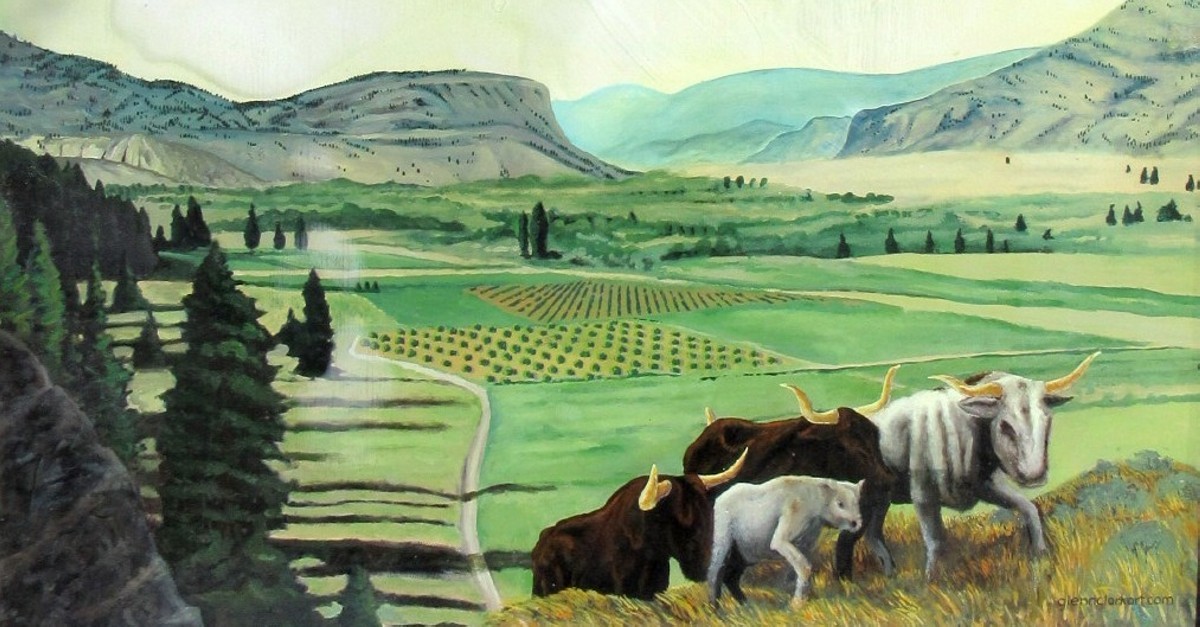The area, later known as Fairview, began as a small claim in 1887. By 1919, Fairview had become a ghost town. Little remains, the site of the Presbyterian Church, constructed at Fairview in 1899 was moved to Okanagan Falls and is affectionately known as the Blasted Church. The Fairview jail, the last remnants of Fairview was moved to the Oliver Museum in 1981. I have yet to find the old cemetery, though no headstones remain, the small iron fencing that surrounded children's graves is still there. The Okanagan Historical Society installed a pedestal with a commemorative plaque at the cemetery, that is my understanding.

I moved to Oliver in June 2020, the community is friendly and welcoming. The first time I visited Oliver, in April, I recall heading north from Osoyoos when all the apple trees were in bloom, I remembered how beautiful it was. I knew then, I was home.
Nestled in the beautiful south Okanagan, Oliver can proudly call itself the Canada's Wine Capital, offering more than 40 of British Columbia's internationally recognized wineries.
Oliver: Canada's Wine Capital appear on both welcome signs. Oliver is a small community with approximately 5,000 residents drawing tourists from around the world. Though Oliver is primarily an agricultural area with an abundance of orchards, and fields of vegetables, it is the local wine industry that has boost Oliver's economy. Most of the local wineries offer tours and of course wine tasting. There are bus tours that offer a variety of options throughout the Okanagan Valley.
Oliver was named after John Oliver, Premier of British Columbia between 1856 to 1927 and affectionally known as "Honest John". John Oliver and his government brought irrigation water and settlement lots to the area with the South Okanagan Lands Project, known as "The Ditch".
The Oliver Municipal Hall is home in what was South Okanagan Lands Project office.
Oliver has a semi-arid climate with hot, dry summers and cool winters, located in the Thompson Okanagan region and is 21 km north of Osoyoos and 25 km north of the USA border at the Washington State border.
Fun facts:
In 1935, Oliver was featured in Ripley's Believe it or Not for the claim that none of the dogs in Oliver had fleas.
In 1990, Oliver held the world record for baking the world's largest cherry pie.
Oliver was once known as "The Home of the Cantaloupe" as well as the "Home of the International Horseshow."


Oliver
Nestled between McIntyre Bluff and the northern end of Osoyoos Lake, Oliver is named after former British Columbia premier John Oliver (affectionately named "Honest John") Whose government purchased, in 1919, 22,000 acres of land along the Okanagan river financed an ambitious irrigation system to encourage orchard development.
By 1921. the town site had been planned and, two years later, a branch of the CPR reached Oliver (it was abandoned in 1978).
As an unemployment relief project during the “Dirty Thirties", an airport was completed in 1933 and, in 1942, the 45-bed St. Martin's Hospital was established by the Sisters of St. Anne, while the Village of Oliver was incorporated in 1945.
From its early ranching and logging origins, Oliver has progressed through ground cropping to become one of the province's premium fruit-growing areas, with vineyards, wineries and allied industries, and, in 1996, celebrated its 75th birthday.
Caption: Looking West onto the main irrigation syphon in Oliver, 1920. The syphon carried water from the East to the West side of the Valley.

Oliver and Osoyoos
Located on historic trails used by Indians, fur traders and gold miners. Oliver and Osoyoos are today thriving communities which, over the years, have made dry land blossom.
Even today, the perfumes of the Sonora desert permeate the air while snakes, scorpions and rare reptiles still live here.
Until the international boundary between the United States and Canada was agreed in 1846, The Okanagan Valley formed part of Oregon Territory, jointly shared by American and British interests.
But gold-mining brought settlers and, when the flowing bunch grass proved ideal for ranching, trail herding of livestock became an industry. In the early '20s, after World War I , a dam was built at the foot of McIntyre Bluff, a 40 km cemented "ditch" made available to Oliver and Osoyoos settlers the benefits of a gravity-fed irrigation system, which transformed 5,000'acres of Valley land into fertile orchards. (Until their trees bore fruit, growers earned fame for their ground crops, especially cantaloupe melons).
In 1952, 23 miles of the winding Okanagan River were straightened under a Flood Control Program and, from 1963 to 1973, a 30-lb pressure system was installed, to deliver water to the highest point of every approved orchard and vineyard.
The gold is long gone. The longhorn cattle and wild horses formerly a feature of this area have been replaced by modern breeds. With mechanization, farm life became easier. The development we see in this Valley today is the result of joint efforts by Salish Indians, fur traders, gold seekers, cattle ranchers, fruit and grape growers, their legacy a peaceful array of luxuriant orchards, green pastures and fine wines.